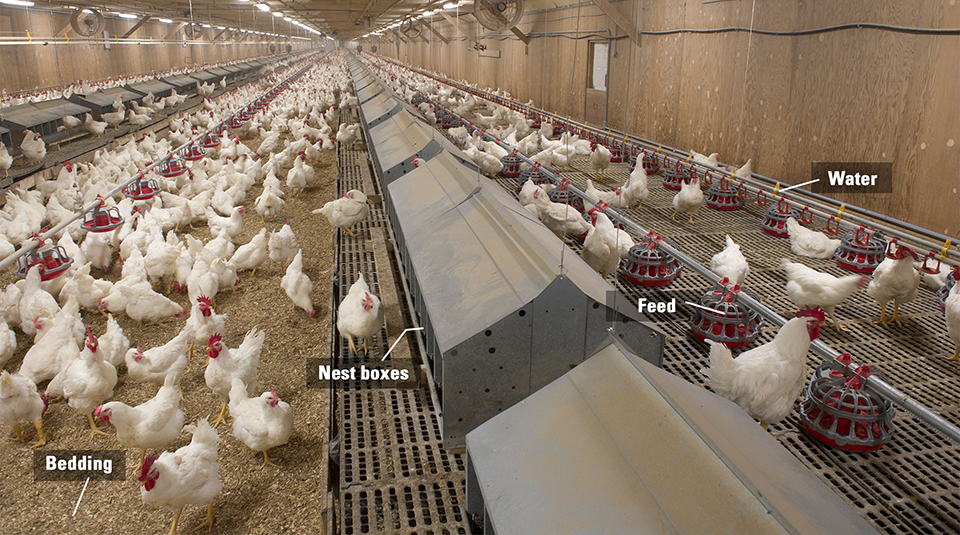
Photo courtesy of the Poultry Industry Council
What came first, the chicken or the egg? The answer to this age-old question is more complicated than you might think! Those cute fluffy chicks that arrive on the broiler farm have to come from somewhere, and the answer is the hatchery. But where does the hatchery get the eggs needed to hatch a chick? That’s where broiler breeder farms come in. We could go on and on, back through the breeding program of broiler chickens, but let’s keep it simple and begin with the parents of broiler chickens.
Broiler breeder farms, which are operated by broiler hatching egg farmers, raise female (hens) and male (roosters) birds who are the parents of broiler chickens. These hens and roosters mate to produce fertilized eggs (not the same as the table eggs we eat), which are sold to broiler hatcheries for incubation.
There are two stages in a broiler breeders’ life – rearing and breeding. Farmers have separate barns called pullet barns, where the chicks are raised until they are ready to be transferred to the breeding barns. A pullet is the technical term for a young female chicken before she starts to lay eggs. During the rearing stage, males and females are raised separately because of their different growth rates and nutritional requirements. Later on, the females and males will be moved into the breeding barn.
Hens begin laying eggs at approximately 26 weeks of age. They will lay between 145 and 150 eggs before the end of their expected lay period approximately 35 to 40 weeks later. Broiler breeder farms have automated egg gathering systems where the eggs gently roll from the nest box onto a conveyor belt to an egg gathering station. Broiler hatching eggs are collected several times a day and only high quality ones are sent to the hatchery to be hatched into broiler chicks. The hatchery picks up the hatching eggs from the broiler breeder farm one or more times per week.





